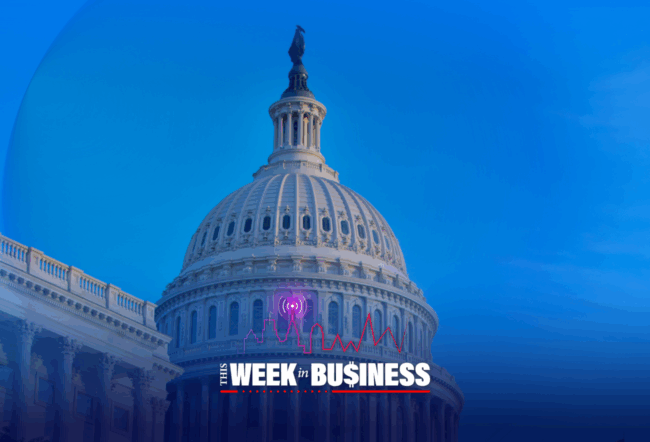The future of the Affordable Care Act (ACA) and the ability of health care insurers to develop strategies based on government promises are on uncertain ground. In the coming days, the U.S. Court of Federal Claims will decide on lawsuits where insurers seek to recover unpaid dues from the government under an ACA “risk corridor” program that sought to incentivize insurers to offer coverage in markets they might find unattractive. Similarly, payments to insurers have been held up under a “cost sharing reduction” program, where the government subsidizes insurers to offer discounts on deductibles and co-pays to lower-income people.
The government’s refusal to pay insurers their dues under the risk corridor program – totaling $12.3 billion – is causing collateral damage as well. It undermines the confidence insurers could have on its promises, raises premiums and therefore federal subsidies, and distorts risk pools, say experts at Wharton and elsewhere.
Knowledge at Wharton discussed the situation and its likely outcomes with Scott Harrington, Wharton professor of health care management; Robert Field, professor of law and health management and policy at Drexel University, who is also a lecturer at Wharton; and Timothy Jost, emeritus professor of law at Washington and Lee University School of Law and co-author of the casebook Health Law. The three experts shared their views on the Knowledge at Wharton show on SiriusXM channel 111. (Listen to the full podcast using the player at the top of this page.)
Jost offered a snapshot of the status of the legal challenges. Insurers have filed about three dozen lawsuits, and one of them is a class action lawsuit representing 150 insurers. They are seeking a total of $12.3 billion in unpaid reimbursements under the risk corridor program. A number of those cases have been filed at the U.S. Court of Federal Claims. One judge has ruled in two cases in favor of the insurers, while a couple of other cases have had rulings go in favor of the government.
“Politics get in the way of sensible policy.”–Scott Harrington
Two leading cases – one for the government and one for the insurers – are now before the U.S. Court of Appeals for the Federal Circuit, which hears all appeals from the U.S. Court of Federal Claims. It heard oral arguments in January, and a ruling is expected any day now. “That may well be the final decision, unless the Supreme Court decides to take it,” Jost said.
Chain Reactions
According to Harrington, “the situation is full of irony” as it relates to the cost sharing reductions. Insurers that are not receiving reimbursements under that program are forced to raise premiums. That in turn increases the federal budget deficit, because health care insurance subsidies are linked to how high premiums go, he explained. “It would actually make sense to fund the cost sharing reductions to reduce the federal deficit and reduce some of this pressure on premiums,” he said. “But politics get in the way of sensible policy.”
Jost said that the defunding of the cost-sharing reduction program has actually increased premiums for higher-income people while “lower income people have more options and can get better insurance coverage.”
The impasse over the payments under the risk corridor and cost sharing reduction programs raises serious doubts about the future of the ACA. “It’s death by a thousand cuts,” said Field. In any event, he expected people to continue signing up for coverage under plans in the health care exchanges.
The outcome of the lawsuits would decide the future of the Affordable Care Act, and its ability to continue in some form, said Jost. However, he pointed out that a bigger concern is the end of the individual mandate penalty in 2019 and the fact that the Trump administration has allowed the sale of short-term plans and so-called association plans that offer bare bones coverage. He said those plans would “siphon a lot of young healthy people out of the Affordable Care Act market.” As a result, insurers are worried about “who are they are going to end up with,” he added. In other words, it could cause distortions in the risk pool of health insurance applicants, leaving ACA marketplace insurers with high-risk individuals.
The Long Road to Court
Harrington explained how the dispute over payouts under the ACA ended up in court. The risk corridor program was included in the ACA to encourage insurers to ensure access, coverage and affordability of health insurance. Effective in 2014, 2015 and 2016, it sought to provide insurance to individuals with pre-existing conditions, stabilize premiums, reduce uncertainty in setting rates and ensure affordability to low and moderate income individuals.
“There is a real problem as to the government’s willingness and ability to make good on its promises going forward.” –Timothy Jost
Under the program, insurers whose costs exceeded a certain threshold would get payouts from the government, whereas those who made more money relative to those thresholds would have to pay in proportionate amounts. “What happened over time is that the requests for payouts were enormously greater than what was collected,” said Harrington.
Although the legislation originally implied that the government would make the payouts, Congressional actions that followed ensured that “the government never paid the money,” Harrington explained. “As a result, you have insurance companies that lost a lot of money that they’re not getting reimbursed under the formula.” Suing the government was their logical next option, which is what they did.
Similar questions have been raised with respect to the cost-sharing reduction program as well. Under that program, qualified individuals could get discounts on deductibles, copayments and coinsurance; the government undertakes to reimburse insurers who pass on those discounts. Jost noted that many insurers incurred losses in this program after the government changed its interpretation of the law in 2017. Consequently, insurers adjusted, or increased their premiums. “There is a real problem as to the government’s willingness and ability to make good on its promises going forward,” he added. Jost said many insurers, including health care cooperatives that had been formed under the ACA, went out of business because of their inability to collect their payments.
The Counterargument
Republicans opposed to the risk corridor payments such as Sen. Marco Rubio of Florida have said they are bailouts for insurers at taxpayers’ expense. In any event, the risk corridor payments failed to get funding from Congress because of riders that were introduced in appropriation bills.
“The ACA provided for these payments and by the time they came due, it was a Republican Congress, and they refused to appropriate the money,” said Field. “Obama was able to switch around some funds and pay it. Trump said he would not.” The question, he said, is: “Can the administration pay this money without an explicit appropriation?” He noted that while the Trump administration has made some of the payments under the program, the entire matter is in a legal limbo.
“It’s death by a thousand cuts [for the Affordable Care Act].” –Robert Field
Inflection Point for Insurer Strategies
According to Field, one of the most important implications of the lawsuits is how the outcome could affect insurers and their future strategies. “If insurers feel that the government won’t make good on promises that were in the ACA, what will that do to their participation in the exchanges in the future?” he asked. “Are [the insurers] going to get spooked, or are they going to decide that this is one more straw on the camel that might break its back and decide that these exchanges aren’t worth it?”
Some insurers who became insolvent and subsequently went into liquidation proceedings found a way to cash out. They sold their litigation rights and their claims under the risk corridor program to private investors and private equity firms. One insurer that sold those rights two years ago is Land of Lincoln Mutual Health Insurance Co., which was in dispute with the State of Illinois.
Typically, in such cases, the private investor will offer a price that is at a deep discount to the amount being claimed by the insurer. “Maybe it’s pennies on the dollar, but the risk is being transferred to those investors,” said Harrington. Added Jost: “In at least one of these cases, [private investors] bought it up for 30 cents on the dollar. It’s a big gamble, and I’m not sure it’s a gamble I would have made.”
“The failure to fund cost sharing reductions has not contributed to the stability of the market and has created much more pressure on premiums, especially for those not eligible for subsidies,” said Harrington. If the court decision goes against the insurers, “it undermines the confidence that private players can [have] on legislation when it’s passed,” he added.



